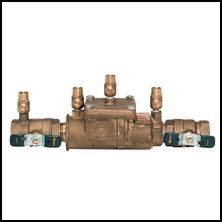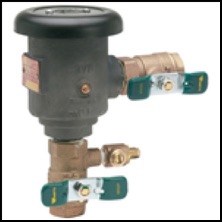
What is backflow ?
Backflow is the undesirable reversal of the flow of water from its intended direction in any pipeline or plumbing system. Backflow is dangerous because it can allow drinking water in plumbing systems to become contaminated and unusable.
What is a backflow preventer ?
Backflow preventers are mechanical plumbing devices installed in a plumbing system to prevent water from flowing backward in the system. A properly installed, tested and maintained (annually) backflow preventer at the service entrance to a building or residential property can reliably prevent the backflow of water of an unknown quality from flowing back into the community water system.
Is it really important to prevent backflow ? Absolutely.
The Department of Health inforces Water Companies to require all public water systems in the Commonwealth to operate an on-going program to protect the public water supply from contamination from possible cross connections like underground Irrigation Systems, Inground Pools, and other potential hazzards. The most effective method for the water utility to meet this requirement is to require customers to install a backflow preventer on the main supply line to their property or facility, thus protecting the community water system from any cross connections that may be present inside a customer's plumbing system. All water users benefit from an active, on-going cross connection control program that includes the installation of backflow preventers.
What is a Cross Connection ?
It is a situation where there is a direct arrangement of a piping line, which allows the potable water supply to be connected to a line which may introduce a contaminant.
Why does the customer have to pay for and install the backflow preventer ?
The backflow preventer is installed to protect the public water supply against possible hazards in the customer's plumbing system. The actual or potential cross connection belongs to the property owner and not to regulatory officials or the water utility. Once the water goes beyond the meter, water quality could be altered. The water utility does not want the water back, nor do the water customers want to purchase used water. If a backflow preventer is required to keep the water safe, then the person who created the cross connection (irrigation systems etc..) should purchase, install and maintain the backflow preventer.
Are there different types of backflow prevention devices ? Yes.
The most commonly used and annually tested are the Double Check Valves (DCV), which are mostly used in residential applications on the water main or the sprinkler line, they last the longest and are fully rebuildable. Another type is a Reduce Pressure Zone Device (RPZ), which are most commonly used in commercial applications with higher risk factors like Dentist Offices, and food establisments that could have multipile cross connections , and must have a acceptable drain installed underneath them also rebuilbable. The (PVB) Pressure Vacuum Breaker is less effective, and unreliable. Do to it dispersing heavy amounts of water when they fail they have to be installed outside. Because it doesn’t need to be tested every year, you never know when it stops working, and when they fail they are expensive to keep changing.



RPZ- Reduced Pressure Zone
1.The (RPZ) Reduced Pressure Zone, mostly used in commercial applications with higher hazardous conditions.
DCV- Double Check Valve
2.The (DCV) Double Check Valve is mostly used in residential homes on the main line or sprinkler line.
PVB- Pressure Vacuum Breaker
3.The (PVB) pressure vaccum breaker mostly used on sprinkler lines outside.
What is Backflow
Identifing Some Devices

H2OSAB.COM © all rights reserved
